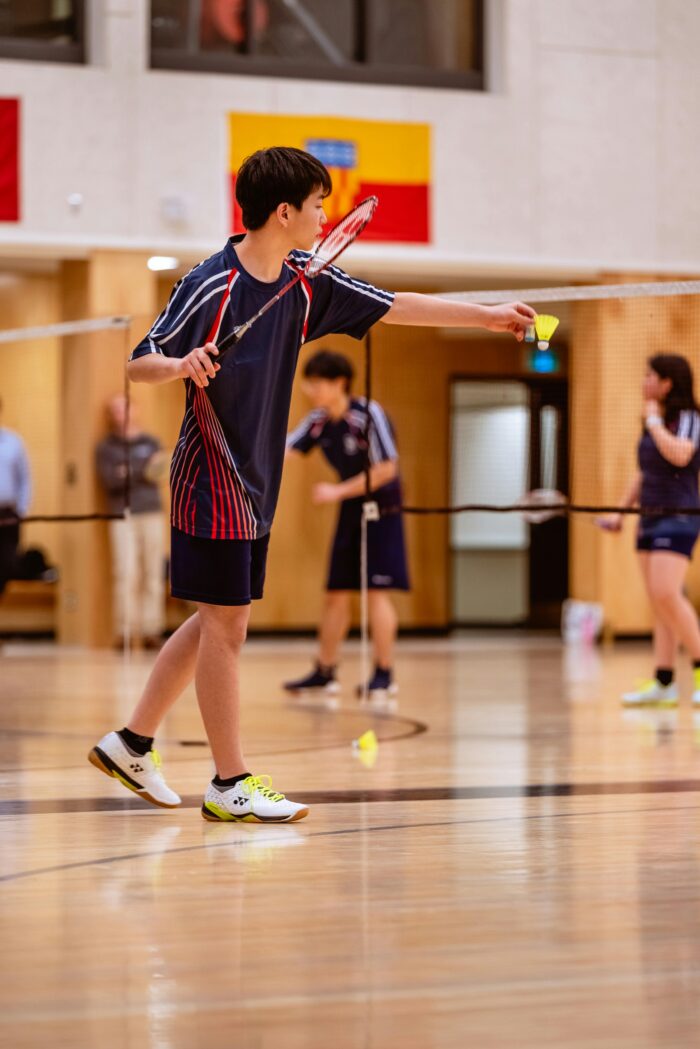The Myth and the Reality of the Student-Athlete
To the untrained eye, the student-athlete’s life is a cinematic highlight reel—full scholarships, locker room celebrations, and an admissions edge delivered on a silver platter. The “free ride” myth persists, casting student-athletes as lottery winners rather than competitors in one of higher education’s most demanding double majors: sports and scholarship.
Let’s set the record straight. A student-athlete isn’t simply a student who plays a sport or an athlete who takes classes. It’s a dual identity, each side operating at full throttle. We’re talking 5 a.m. practices, cross-country travel, and game-day pressure—on top of midterms, group projects, and career prep. It’s not just a balancing act; it’s a full-blown strategic operation in time management, resilience, and sustained performance.
And yet, for those who approach this crucible with purpose, the student-athlete experience can become a launchpad—not just for athletic or academic success, but for life itself. The key lies in treating the experience as more than survival. It’s about learning to compete smarter, lead under pressure, and show up—on the field and in the classroom—with intentionality and vision.
What Defines a Student-Athlete Today?
Forget the old caricature of a jock cruising through college on raw talent and charisma. Today’s student-athlete is a tightly managed, rigorously assessed contributor to both campus life and institutional branding—whether competing under NCAA rules, NAIA structure, or club team leadership.
At the varsity level, NCAA athletes fall under one of three divisions, each with its own eligibility rules and scholarship limits. Division I demands full-time enrollment, strict GPA maintenance, and adherence to a carefully calculated credit load—typically 12 or more credits per term. NAIA programs, often smaller but equally competitive, enforce comparable standards, with a GPA baseline of 2.0 and steady progress toward degree completion. Even club athletes, while outside the national regulatory structures, often train with near-varsity intensity, all while managing academics independently and without institutional safety nets.
The academic bar is not negotiable. Miss a class? You run laps. Miss a GPA benchmark? You lose eligibility. Every semester is a checkpoint—fall behind in credits or dip below your institution’s GPA floor, and your season (or scholarship) may vanish. Compliance staff monitor these metrics like air traffic control—your academic performance is not just your business; it’s your team’s business.
Athletically, the pace is brutal. Division I athletes log upwards of 30 hours per week in sport-related activities—weights, practices, film sessions, travel, and games. Add mandatory recovery protocols and media obligations, and the “student” part of the hyphenate becomes an exercise in tactical efficiency. Club athletes may have more flexibility, but expectations for commitment and performance still run high, especially at elite institutions.
So what defines a student-athlete today? A relentless dual mandate: deliver results in the classroom and on the scoreboard—or step aside for someone who will.
The Academic Edge: Leveraging Your Athletic Identity for Admission
Admissions officers know the difference between a student who plays sports and a student-athlete. One is extracurricular; the other is an identity. The latter signals time discipline, resilience under pressure, and the ability to lead and follow in equal measure—traits elite universities prize not just in applicants, but in future classmates, roommates, and alumni.
The term “academic athlete” isn’t a contradiction—it’s a signal flare. It tells committees that you’ve been operating at professional standards in an amateur setting. You’ve had to prioritize, make sacrifices, perform in public, and recover from setbacks while still hitting academic benchmarks. In a sea of applicants with straight A’s and service projects, that’s the kind of textured excellence that stands out.
We worked with one client—a high school soccer captain with a 3.7 GPA and no Ivy League legacy—who was accepted to a top-10 university. Why? Her essay didn’t dwell on a buzzer-beater or a torn ACL. It mapped her evolution from “team follower” to “locker room architect,” describing how she turned a disjointed group into a conference-winning unit. She cited metrics: increased team GPA, reduced practice no-shows, better cohesion across cultural lines. Her interview reinforced it—she talked about game prep like a business plan and team culture like an organizational case study. The admissions officer later told us: “She could lead our orientation tomorrow.”
That’s how you talk about athletics in your application. Don’t get lost in nostalgia or sports clichés. Avoid the sentimental trap (“I learned teamwork,” “I never gave up”). Instead, translate your experience into language that admissions readers understand: strategy, discipline, impact. Use stats if you have them. Explain your role. What changed because you were there?
Athletics, done right, isn’t just an add-on. It’s a narrative platform—one that lets you show who you are under real pressure. Done strategically, it doesn’t supplement your application. It is your edge.
Performance Under Pressure: Time Management, Leadership, and Resilience
There’s no such thing as a “light day” in a student-athlete’s calendar. Morning lifts, back-to-back classes, team meetings, afternoon practice, evening study hall—every hour accounted for, every minute spoken for. The margin for error? None.
This crucible forges more than muscle—it builds the executive skills that admissions committees (and future employers) crave. You learn to plan ahead because procrastination isn’t an option. You master communication—whether calling out defensive shifts or clarifying expectations with a group project partner. You become fluent in failure: losing games, missing shots, falling short—and showing up again anyway.
Leadership? It’s not just about being named captain. It’s managing energy in the locker room after a bad loss, holding teammates accountable without drama, and setting the tone when no coach is watching. Student-athletes don’t talk about “ownership” in the abstract—they live it.
But high performance isn’t about grinding endlessly. The best student-athletes understand recovery as part of their regimen—nutrition, sleep, therapy, meditation. Mental health isn’t a sign of weakness; it’s a performance metric. There’s no time for breakdowns during finals or playoff season, so resilience isn’t just internal. It’s supported—by counseling resources, mentors, routines.
Admissions readers don’t expect you to be invincible. But they will respect applicants who acknowledge pressure without collapsing under it. Frame challenges as strategic inflection points: What did you learn? How did you adapt? When did you reach out—and how did you bounce back stronger?
Ultimately, the student-athlete lifestyle isn’t just demanding—it’s developmental. It molds time managers, decision-makers, and leaders who thrive when others stall. That’s the kind of profile that gets noticed.
The Resume Playbook: Translating Athletic Experience into Professional Language
When building your application or LinkedIn profile, “Played varsity basketball” won’t cut it. A standout student athlete resume or collegiate athlete resume reframes that experience in terms admissions officers and recruiters value: leadership, results, discipline.
Start by quantifying impact. Instead of “member of swim team,” say: “Competed as NCAA Division III athlete while maintaining 3.8 GPA; contributed to team’s first conference title in a decade.” Swap “team captain” for: “Led 25-member team through undefeated season; implemented peer accountability system that improved practice attendance by 30%.”
Every bullet should point to outcomes, not just effort. Think metrics, milestones, and momentum:
- Increased win percentage? Note it.
- Organized team travel or fundraising? Break down the logistics.
- Mentored underclassmen? Frame it as leadership development.
When reviewing sample student athlete resumes, notice the best ones make sport a platform for professional traits: project management (scheduling), performance analytics (tracking stats), public speaking (media interviews), and crisis management (injury comebacks).
Admissions officers aren’t looking for another “hard worker”—they’re looking for changemakers. Your athletic record is a trove of proof that you can set goals, execute under pressure, and elevate the people around you. Don’t bury it in a generic activities list. Make it sing.
Pro tip: group athletic experience under its own section—Athletics & Leadership—to signal that it’s a serious pillar of your candidacy. And remember: the resume isn’t about sports. It’s about results you’ve delivered through sports. Make that distinction, and your background stops being “unusual”—it becomes undeniable.
Beyond the Field: Long-Term Benefits of the Student-Athlete Mindset
The benefits of being a student athlete don’t end with a college acceptance letter—they compound over time. Ask any MBA admissions officer or Fortune 500 recruiter what traits they value, and you’ll hear familiar themes: grit, time management, collaboration under pressure. Sound familiar?
The “athletes’ life” isn’t just sprints and scoreboards—it’s learning to push through plateaus, communicate clearly in chaos, and stay mission-focused when stakes are high. These are not habits that fade after graduation—they scale up. Former student-athletes often arrive at MBA programs already wired for intense schedules and peer-driven accountability. In the corporate world, they lead projects with the same urgency and cohesion they once brought to the field.
And there’s another dividend: the network. Former teammates become colleagues, mentors, investors. Shared experience builds trust—fast. That’s social capital, earned the hard way.
The most successful student-athletes we’ve seen don’t shed their “scholar athlete” identity when the season ends—they evolve it. They apply the same ambition to academics, constantly looking to improve, compete, and contribute. That mindset—driven but reflective, confident but coachable—is exactly what top-tier programs and top-flight employers seek. Not just players. Pros.
Build a Future That Honors Both Your Academics and Athletics
Athletics isn’t a detour from your admissions story—it’s a power boost. When framed strategically, your student-athlete journey signals leadership, discipline, and uncommon drive. At MBA Exchange, we know how to turn that experience into a competitive edge. Our former admissions officers have helped athletes like you translate their stories into offers from top-tier schools.
Schedule your free consultation with an MBA Exchange consultant today—and start crafting an application that plays to your strengths.





